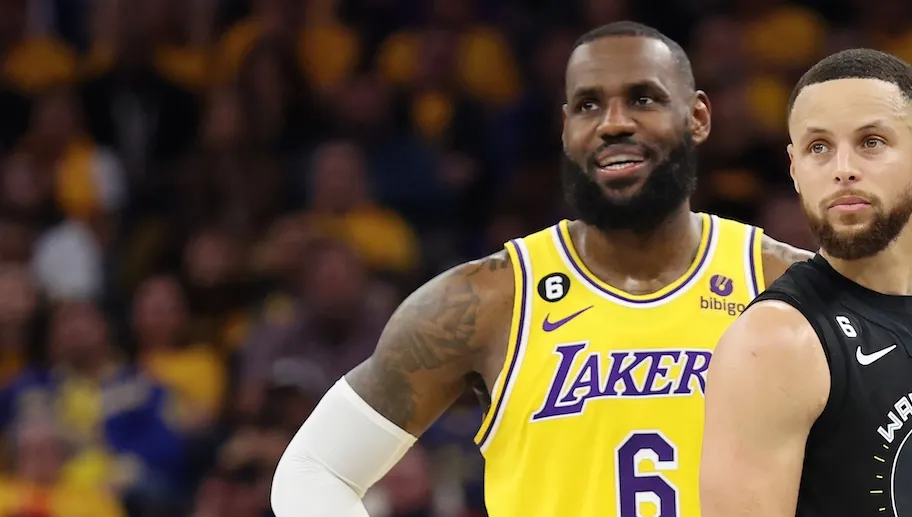My first thought upon seeing that the Lakers had traded a haul for Hornets center Mark Williams was that Rob Pelinka had never bothered to tab over to the “games played” section of Williams’s permanently mangled Basketball-Reference page. The second was that the Western Conference playoffs are going to be incredible this year.
The majority of the eight teams in the bottom half of the playoff race made win-now trades ahead of Thursday afternoon’s trade deadline. The talent scramble somehow gets fiercer the further you go down the standings; four of the five teams between eighth and 12th, at least two of which will not even make the play-in field, pushed their chips in. Why would this many ailing teams further over-leverage themselves for a chance to fight their way into the playoffs? I’d argue that this is proof that the play-in is working as intended and keeping more teams than ever before from tanking, but more to the point, the teams at the bottom of the race are battle-tested while the teams at the top are not. They’re not just pushing for a playoff spot due to some clever incentives or because it’s the right thing to do. They’re doing it because they think they’ve got a shot at taking out one of the variously green teams currently atop the standings.
The most interesting meta-shift in the NBA this season has been toward hyperfast, defensively oriented teams playing deep rotations and winning, because their fourth- and fifth-best players are far more capable then their opposing counterparts. The Celtics play a variant of this style (with veterans), as do the Clippers (with slightly worse veterans); the Magic do it with a team composed entirely of 6-foot-9 guys. But this style’s most doctrinaire and relatively successful adherents are all currently atop the Western Conference.
I am thinking here of the Thunder, Grizzlies, and Rockets specifically, who are the fourth-, sixth-, and fifth-youngest teams in the NBA respectively, and who all play like it. The three teams do not all play exactly the same way—Houston and Memphis pound the offensive glass, Oklahoma City and Memphis sprint out in transition as much as possible, Oklahoma City and Houston play a decent amount of pick-and-roll. But they share the essential components and approach that this style demands. Each team has at least 11 players who play at least 11 minutes per game; each team has a ferocious, ballhawking defense; and the foundation of each team’s success is winning the possession game. Heliocentrism is in decline—all hail the rise of hyperball.
What makes this shift so fascinating, however, is that only last season’s Celtics have won a title playing anything close to this style, and they had so much cohesive talent that they might well have won because they were simply better than everyone else by such a clear margin. Not only are the players on the three demon teams atop the West untested, but their very way of winning is as well. It is both a cliché and extremely true that basketball in the playoffs is different, and different in such a way that a good deal of the easy advantages this trio enjoys will become much harder to come by in that more rugged, ruthlessly min-maxed environment.
That’s the theory anyway, and it’s a big reason why the West playoffs will be so intriguing to watch. The Warriors are wheezing and rickety and compromised by Father Time, but Jimmy Butler has a habit of reviving himself during the playoffs and kicking the shit out of the youth. I would argue that giving Butler $121 million for the next two seasons simultaneously represents an acceptance of the looming Victor Wembanyama era; by the time that commitment is done, the league might well be in a new age. Dallas beat Oklahoma City last year by slowing the game down and pounding the Thunder down low, which the Mavs will try to repeat as directly as possible with Anthony Davis this season.
(A short word for the Sacramento Kings, the eternal idiot in the room, who had to trade their franchise superstar but took the predictably moronic path of eschewing a cache of young players and picks and a timely jumpstart on a rebuild for veterans. With Zach LaVine, they have reconstituted the Chicago Bulls and are asset-negative. They also have the eighth-oldest roster in the NBA, a personnel mix that can no longer defend, and a new and hideously misshapen Ball Don’t Stop offense with fewer and fewer good passers or quick processors. They made a win-now trade that will win them few games now or in the foreseeable future. Great job, guys.)
The Lakers pried away Luka Doncic, an obvious and easy move even if they hadn’t gotten him for 40 percent of his value, but they have also begun the process of reorienting their team around their new star’s purpose-built, playoff-ready style of play. Dalton Knecht, a 2030 pick swap, and their own unprotected 2031 first-rounder is a drastic overpay for a man who has played 84 games in three seasons due to a litany of injuries, although Mark Williams is also 23 and an exemplar of the sort of center that Doncic has thrived alongside. It’s a big risk—I am pretty skeptical of Williams even if he’s healthy, as he can get the crud beaten out of him despite his huge standing reach—but it is at least a calculated one, and a gamble based on optimizing the way the team will play in the playoffs. Lukaball is antithetical to hyperball, and while one certainly seems ascendant, the other is already proven to work.
Still, that newish way of winning is working, and I doubt that the three teams running the West are simply going to get swept aside by the old guys currently leering hungrily up at them. Those three teams are not just stylistically interesting but extremely talented, the Thunder in particular. As the CBA flattens out the competitive landscape and enforces parity, one wonders whether the style of play in the playoffs will shift alongside its regular-season counterpart. We’ll get the start of that answer in a few months.


